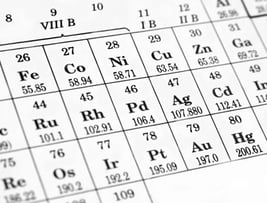 Quartz magazine recently listed its most underrated scientific breakthroughs of 2017. In addition to a pill that treats mental illness with built-in data tracking, floating wind farms, the oldest ice core ever drilled out of Antarctica and the emergence of lab made clothing, was an interesting tidbit about scientists watching two neutron stars collide for the first time. The discovery, by scientists from Laser Interferometer Gravitational-wave Observatory (LIGO), suggests that we are all made of elements created in stars.
Quartz magazine recently listed its most underrated scientific breakthroughs of 2017. In addition to a pill that treats mental illness with built-in data tracking, floating wind farms, the oldest ice core ever drilled out of Antarctica and the emergence of lab made clothing, was an interesting tidbit about scientists watching two neutron stars collide for the first time. The discovery, by scientists from Laser Interferometer Gravitational-wave Observatory (LIGO), suggests that we are all made of elements created in stars.
“LIGO scientists operate the only laboratories in the world equipped to detect gravitational waves, which are created by the collision of really massive objects, such as black holes or neutron stars. Until this year, LIGO had detected four black-hole mergers, but black holes do not release visible light, and thus tell only an incomplete story of what happens during such a violent event. Neutron-star collisions, on the other hand, do release visible light, which can reveal all sorts of new information. The gravitational waves detected in 2017 taught us something huge: most of the heavy elements in the periodic table are made when neutron stars collide.”
The magazine wrote about this discovery in October 2017. “It may surprise you,” the author said, “to learn we’ve no proof where most of the elements on the (periodic) table come from.”
While we can find all the elements on Earth, scientists don’t know how they got here. They know they didn’t form here, as most of what is on earth is “borrowed either from dust left behind during the formation of the solar system or received in the form of comets and asteroids crashing into the planet.”
To create new elements, you need “extreme amounts of energy” to reconfigure the sub-atomic components of elements – protons, electrons and neutrons. While a logical explanation might attribute the sun as a producer of the new elements, it is “is too small for the kinds of energy needed to produce heavier elements,” and the sun only has hydrogen, helium, lithium, beryllium and boron. Stars are 10 times the mass of the sun, and can make elements, but these are limited to “those with atomic numbers between carbon and zirconium.”
On October 16th 2017, a series of papers was published in several journals telling the story of the violent merger of two neutron stars, which was observed by hundreds of scientists. A neutron star is one of the smallest, densest stars that we know. “A teaspoon of neutron star would weigh 10 billion kg (or 22 billion lbs)—about the same as 1 million very large elephants.”
When two neutron stars come close to each other, they create gravitational waves, or disturbances in space-time. On August 17, 2017, scientists from LIGO recognized signs of this event happening, and they were able to identify it as “the merger of two neutron starts about 130 million light years away.”
The scientists observed the gravitational waves from 100 seconds before the stars collided. Two seconds later, gamma rays reached Earth, and over the next several days and weeks, 70 observatories recorded the event.
“In the days to follow, other types of electromagnetic radiation—including X-ray, ultraviolet, optical, infrared, and radio waves—were detected. Each element has a unique electromagnetic signature. Scientists were able to detect signatures related to an occurrence called the “r process” which was thought to create heavy elements. It’s here that elements like gold, platinum, and uranium are made.”
Based on this event, which may become the most studied astrophysical event in history, the author suggests, that we now “know where in the universe all the elements of the periodic table get made.”
Click this link to see a video on how it looks and sounds when two stars collide or click the image below - https://www.youtube.com/embed/mnianTdeQkc
If you are interested in a free elemental poster, click below and send us your information.

